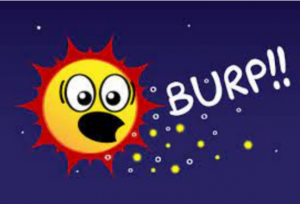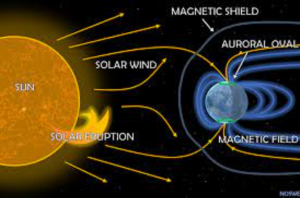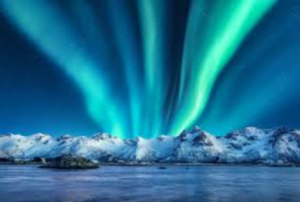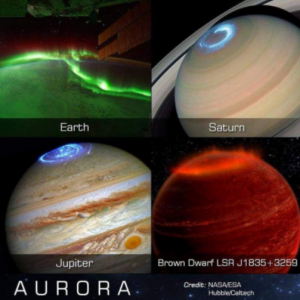Ever wondered, what are the shimmering blue-green northern lights emerging from the sky? You’re right! They are Auroras! Let us now dive deep into it. An Aurora is a beautiful pattern of light that can be seen sometimes in the sky at night. The sky glows with brilliant green, red, blue and yellow colors. Aurora is a Latin word for sunrise. The name of an aurora changes with its location. An aurora near the north pole is called Aurora Borealis, or the Northern lights. An aurora near the south pole is called an Aurora Australis, or the Southern lights. Sometimes both phenomena are called “Aurora Polaris”. But what exactly are auroras?
Systematic scientific studies in this field began in 1716 when a spectacular aurora appeared in Europe and was visible in the entire continent. The English astronomer Edmund Halley proved a relation between auroras and the Earth’s magnetic field.
What causes these beautiful displays of lights?

Sun. Even though auroras are best when seen at night, they are caused by the sun. We know that it is a hot ball of fire, and it produces heat and light due to fusion reactions. As a result, charged particles like protons, electrons, etc. constantly flow out of the sun. The flow of these charged particles is called the solar wind. The protective magnetic field around Earth shields us from most of the energy and particles, and we don’t even notice them. These particles travel through space in all directions at a speed of 480km per second. But the Sun doesn’t send the same amount of energy all the time. There is a constant streaming solar wind, and there are also solar storms. During one kind of solar storm called a coronal mass ejection, the Sun burps out a huge bubble of electrified gas that can travel through space at high speeds. As they enter the Earth’s atmosphere, they are attracted by its magnetic field. The magnetic north and south poles change the direction and speed of these particles. These particles then collide with air molecules or interact with gases in the cold, thin upper atmosphere. It causes ionization, resulting in the production of colored lights. Oxygen glows up a green and red light. Nitrogen glows blue and purple. These colored lights are called Auroras.

Auroras are usually restricted to the polar skies. They are also visible occasionally at lower latitudes due to fluctuation in the solar wind. Auroras are most pronounced, when the Earth’s magnetic field is most disturbed or when there is an unusual increase in solar activity.
Aurora Borealis is most frequently seen around 70° north latitude, while Aurora Australis at around 70° south latitude. These are usually found at heights of 80 km, while some may be as high as 1000 km. These phenomena have numerous forms. Some are like curtain arcs, while others are like rays and fan-shaped coronas. They often produce crackling sounds in the sky. They move so fast that they are also called the ‘Merry dancers’.

Some of the best displays of these natural lights can be seen around the Hudson Bay region in Canada, Northern Scotland, Southern Norway and Sweden. They also occur in South Australia and Sri Lanka. At one time, the natives of Sri Lanka regarded them as messages from Lord Buddha!
Do other planets also get Auroras?
They sure do! Auroras are not just something that happens on this planet. If a planet has an atmosphere and magnetic field, they probably have auroras. We have seen amazing auroras on Jupiter and Saturn.




